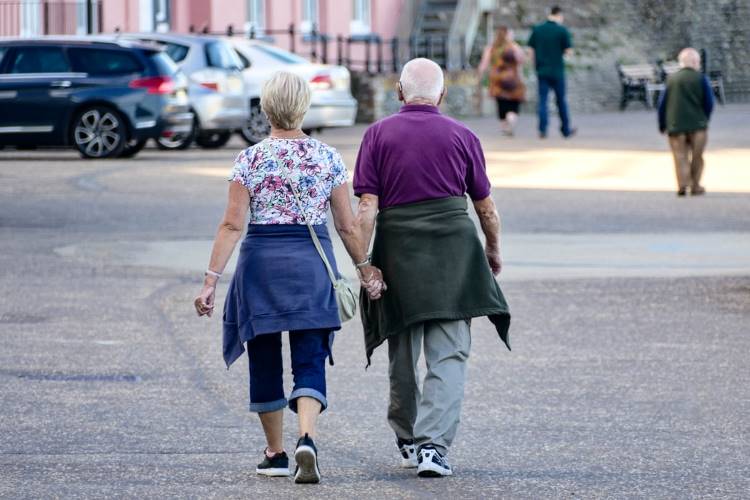
China is addressing its rapidly ageing population by initiating a ‘silver economy’ plan, estimated to be worth trillions of dollars. This strategy seeks to meet the needs of elderly citizens, encompassing services such as meal delivery, nursing homes, and entertainment. The state council of Beijing has highlighted the need of collaboration between state and private sector for successful implementation of this strategy. The plan ambitiously integrates smart devices and cutting-edge virtual reality to mitigate labour shortages and enhance elder care quality.
China’s ageing problem is accelerating due to its long-standing single-child policy, and efforts to increase birth rates are faltering. In 2023, about 297 million people, or over 20% of the Chinese population, were aged 60 or above, pushing China into the category of ‘super-aged society’. This demographic is projected to exceed 500 million by 2050.
READ | Single SRO or many: India’s fintech sector gears up for self-regulation
Confronting its low birth rate, China is pivoting its economy to focus on the elderly majority. Plans include developing 10 industrial parks and encouraging firms to design consumer products such as clothing, vehicles, and food, specifically for older people. The silver economy is expected to reach 30 trillion yuan ($4.2 trillion), accounting for 10% of China’s GDP by 2035, according to China National Radio.
However, the ‘silver economy’ is not just about economic opportunities. It presents a crucial chance to address the social and technological needs of a rapidly ageing population. China’s focus on integrated smart devices and VR technology highlights the potential to combat social isolation, promote mental well-being, and improve physical safety for older adults. Additionally, fostering social inclusion and intergenerational understanding is vital to bridge the digital divide and ensure all elders benefit from new technologies.
Global ageing trends
This phenomenon is not unique to China. The world is experiencing an increase in both the number and proportion of older individuals. The United Nations reports that by 2050, India’s elderly population will constitute over 20% of its total population, as per the 2023 India Ageing Report by the United Nations Population Fund. India is grappling with a significant challenge: more than 40% of its elderly reside in the poorest wealth quintile, which could impact their quality of life and access to healthcare.
While China and India grapple with distinct demographic challenges, both stand to gain from knowledge and resource sharing. Establishing platforms for collaborative research, policy exchange, and best-practice dissemination can accelerate effective solutions. Fostering international partnerships with developed nations, who are pioneers in ageing-related care and technology, can further enrich the discussion and provide valuable insights.
The global population of those over 80 is expected to surge by approximately 279% between 2022 and 2050, predominantly consisting of widowed, dependent elderly women. States like Himachal Pradesh and Kerala report higher life expectancies for 60-year-old women than the national average. Elderly women often face challenges such as widowhood, living alone, and financial dependency, necessitating targeted policy interventions.
Regional variations in India
In 2021, southern states and some northern regions like Himachal Pradesh and Punjab had a higher elderly population than the national average. This trend is likely to continue through 2036. Conversely, states like Bihar and Uttar Pradesh, with higher fertility rates, are expected to see a rise in their elderly population, but below the national average.
The COVID-19 pandemic exposed critical gaps in elderly care, especially in accessible public healthcare. India must focus on disaster preparedness with the elderly in mind. The lack of comprehensive data on the elderly is a significant issue. Upcoming surveys like the National Sample Survey, National Family Health Survey, and Census of India are opportunities to gather relevant data.
The government should increase awareness of schemes for the elderly and regulate Old Age Homes. Learning from China’s approach could be beneficial.
Population ageing is a major social shift of the 21st century, affecting labour and financial markets, demand for services like housing and transportation, and family structures. Countries must prepare for this challenge, strengthening healthcare, pension systems, and social protections for the growing elderly population.
While statistics paint a clear picture of population ageing, it is essential to remember the human face of this trend. The needs, aspirations, and diverse identities of older individuals must be at the heart of policy and societal responses. Focusing on personalised care, promoting active ageing, and valuing elders’ contributions to society ensures a transition with dignity and social inclusion. By prioritising not just demographic numbers but the well-being and active participation of our ageing populations, we can build a future where age is not a barrier but a bridge towards a more inclusive and thriving society.

